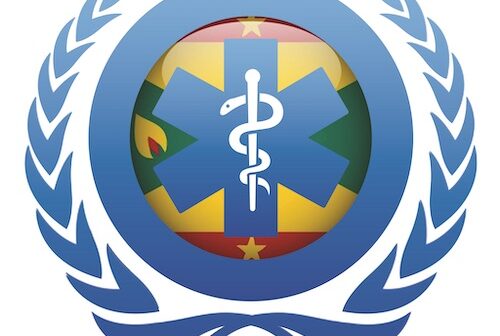The Ministry of Health, Wellness, and Religious Affairs is reporting a minor increase in the number of reported cases of Coxsackie Virus, also known as Hand, Foot, and Mouth Disease on the island.
In response to the minor increase, officials have stepped up sensitization efforts and are reminding parents and operators of day-cares and kindergartens, that frequent hand washing and sanitization of surfaces and frequently used objects are the most effective ways to prevent the spread of the highly contagious disease.
Grenada’s Chief Medical Officer, Dr. Shawn Charles, on Tuesday, said, whereas the disease is “generally mild,” parents and guardians of young children should guard against complacency.
Dr. Charles told the GIS that it is important for managers of learning institutions and parents to work together and take the necessary precautionary measures to prevent the spread of the virus by engaging in the frequent sanitization of surfaces, hand hygiene, and by keeping affected (sick) children at home.
Meanwhile, health personnel from the Ministry’s Community Nursing Department and the Health Promotions Department are in touch with a number of early childhood development centers, as well as person-to-person engagements at facilities on the island.
Hand Foot and Mouth Disease is seasonal in Grenada and is legally notifiable, meaning all medical practitioners; childcare centres, kindergartens, and schools affected by the disease are obligated to notify the Health Ministry.
HFMD is a viral infection caused by a group of enteroviruses, most commonly the Coxsackie virus. The incubation period of HFMD is 3 to 7 days (with a range from 2 days to 2 weeks). Both adults and children can be affected, but young children below 5 years old are more susceptible.
How Is It Spread:
HFMD, which affects mostly children, is spread via bodily fluids like saliva. HFMD is spread from person to person by direct contact with the nasal discharge, saliva, feces, and fluids from the rash of an infected person.
A person infected with HFMD is most contagious during the duration of the illness. It is easily transmitted among toddlers, making child development centers like (pre schools/day-cares) hot spots for the spread of the disease. HFMD is usually mild and self-limiting.
Although the virus may continue to persist in the stool for several weeks after infection, the person generally becomes much less contagious when the illness resolves. Nonetheless, good personal and environmental hygiene must continue to be maintained.
Symptoms:
A child with HFMD may suffer from some of these symptoms: Fever, Sore throat, Mouth ulcers on the inside of the mouth or sides of the tongue Rash (flat or raised spots) or small blisters on palms of hands, soles of feet, and/or buttocks, Lethargy, Poor appetite, Vomiting and/or diarrhea.
There is NO specific treatment besides relief of symptoms. Treatment with antibiotics is not effective and is not recommended. There is NO HFMD vaccine currently available.
If you suspect your child to have HFMD, please seek immediate medical attention.
If there are any changes in the child’s normal behaviour, e.g. irritation and sleepiness, refusal to eat/drink, persistent vomiting or drowsiness, bring your child to the Accidents & Emergency Departments, or health facility, whichever is nearer.
If your child has HFMD, help to minimize the spread of HFMD to others by:
* Informing your child’s school, kindergarten or childcare centre immediately, so they can monitor other children closely and take additional precautions.
* Keep your child at home and away from public places and look out for signs and symptoms in other family members.
* Having good hygiene practices such as: Frequent and proper hand-washing e.g. after going to the toilet and before eating.
* Covering the mouth and nose when coughing or sneezing. Not sharing food/drinks, eating utensils, toothbrushes, or towels with others.
Properly disinfect articles such as toys, tables, books, doorknobs, or appliances contaminated by nasal or oral secretions.
FOUR TIPS to ensure that your child is fit for school:
1: Check for runny nose and fever (to take temperature).
2: Check for blisters on hands and arms.
3: Check for mouth ulcers.
4: Check for blisters on soles of feet, legs and/or buttocks.
These Infection Control Guidelines are clinically proven.
